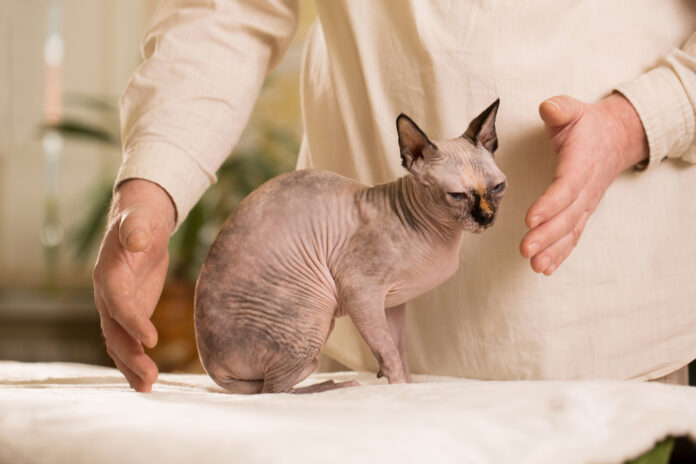In Sync — Study Gets to the Heart of the Animal-Human Bond

Decades of research have shown that having a dog or cat can be good for your health — both physically and mentally. The benefits of sharing your life with an animal include everything from lower blood pressure and decreased anxiety to higher self-esteem and improved immune response. Now, a boy, a dog, and a couple of heart monitors have proven what animal lovers have known all along: a powerful heart-based connection exists between us and our furry friends.
In a simple study, Dr. Rollin McCraty, Director of Research for the HeartMath® Institute, discovered a heart-rhythm synchronization between his son Josh (who was 12 at the time) and the boy’s dog, Mabel.
With both hooked up to portable heart monitors, Josh entered a room where Mabel was waiting. The boy was asked to sit quietly, and consciously send feelings of love and affection toward his dog, without touching or interacting with her.
This shift in awareness brought Josh’s heart rhythms into “coherence,” a harmonious and beneficial state that appeared to influence Mabel.
According to the HeartMath Institute, coherence is characterized by smooth, ordered heart-rhythm patterns — “an optimal state in which the heart, mind and emotions are cooperating together in harmony rather than in competition and discord.”
As Josh continued to radiate love toward his dog, Mabel’s heart rhythms became more coherent as well, mirroring those of the boy. Mabel soon moved closer and lay down on the floor next to Josh.
Prior to the experiment, Mabel’s heart rhythm was erratic as she excitedly explored her new environment (the HeartMath Institute lab). Likewise, after the experiment concluded and Josh left the room, the dog’s heart rhythms became more chaotic again, perhaps due to some initial separation anxiety.
In a similar line of research, a study by Nagasawa et al explored the impact of mutual eye gazing between dogs and their people. Some pairs locked eyes for a couple of minutes, while others for just a few seconds. In the pairs that spent the most time eye-gazing, researchers noted a 130% rise in oxytocin levels in the dogs, and more than twice that (300%) for their humans. Sometimes known as the “cuddle hormone,” oxytocin is associated with love, nurturing, trust and altruism.
“We’re seeing that a pet owner can create what we call a heart-filled environment when practicing heart-focused techniques,” Dr. McCraty noted. “The pets respond by becoming more affectionate, more animated, and more connected with the pet owner.
AUTHOR PROFILE
Celeste Huttes
Celeste Huttes is a freelance writer specializing in business communications — but she finds it far more fun to write about animals! When she’s not writing, Celeste enjoys yoga, traveling, and quality time with family, friends and animals. Two of her favorite four-leggeds — Emmy the Siamese cat and Zoey, a poodle-beagle mix — live with her in Illinois.




